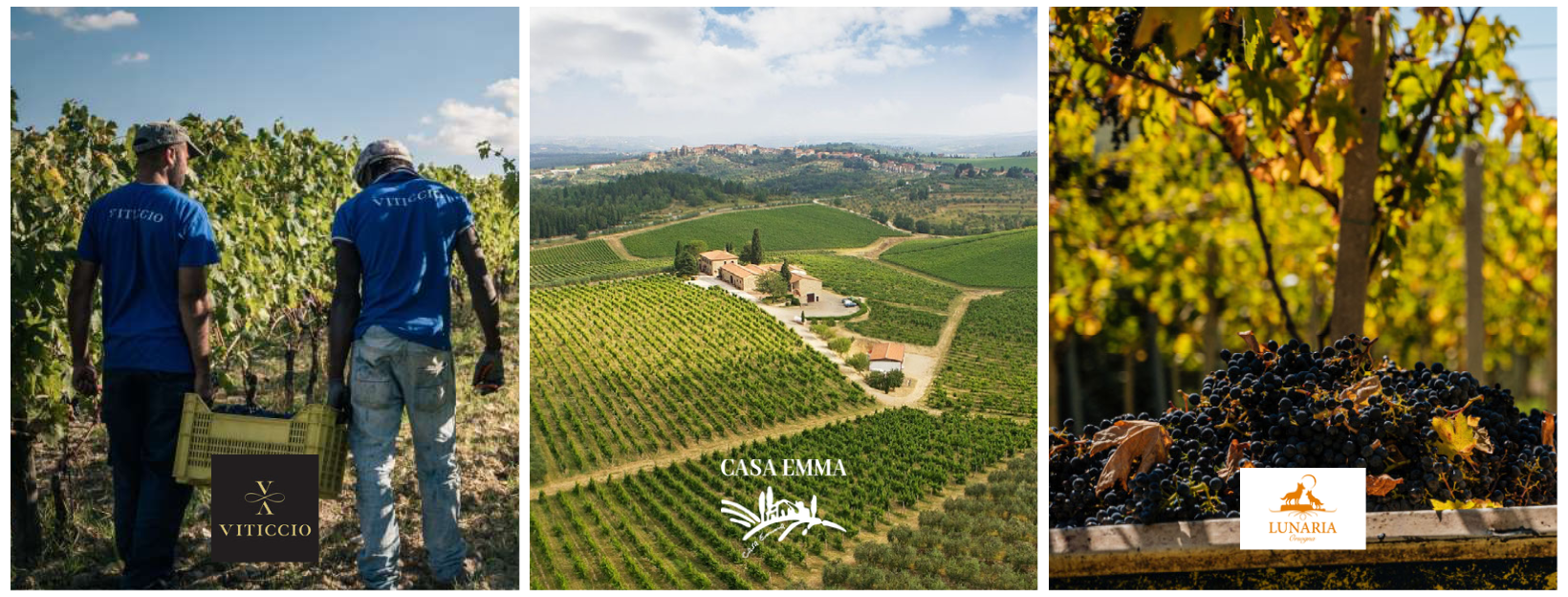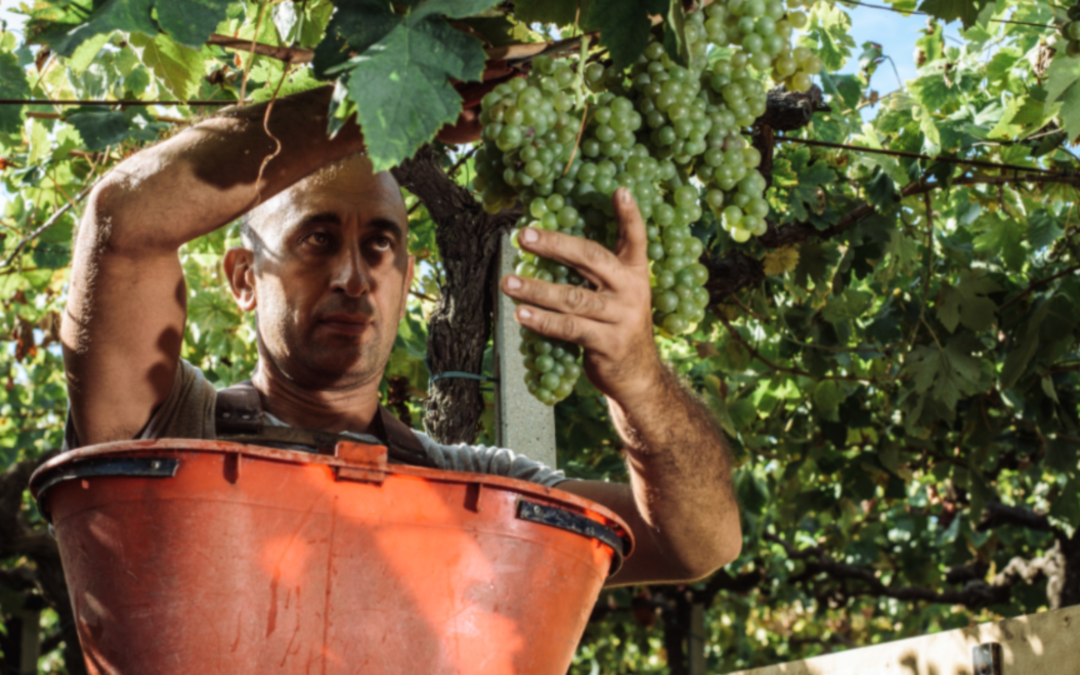Updates submitted September 2021
The harvest season for grapes is a unique period in the winemaking timeline. It is a time that is both delicate and fierce— when a sudden shift in the weather can potentially steer a vintage wildly off course or create circumstances for the utterly sublime. Universally, too, it’s a time when winegrowers and makers alike are at their busiest. As we’re coming over the halfway point in Italy’s harvest season, Serendipity checked in with a few of our featured organic producers to get the dirt on this years’ vintage:
Located in rocky, high-elevation soils in Central Italy, the Vitticcio winery has certified organic holdings across Tuscany in both Greve & Maremma. To date, they’ve already started harvesting Vermentino, Merlot, Syrah and Sangiovese. When October hits, they’ll begin gathering Sangiovese for their Chianti Classico and finish out the season with Cabernet Sauvignon. This year they invested in a green harvest back in August, which involved them cutting and throwing away half of their green bunches to elevate the concentration in remaining grapes.
So far, their harvest has been a success with zero diseases in the vineyards. While their full report won’t be ready until mid-October, the Vitticcio team has been able to reflect on the balanced year they had:
“This year’s climate for both areas was pretty similar. Cold and rainy winter. First part of spring was warm and rainy. There were two nights of frosts in April that brought many damage in all Europe— we pruned vines in late March and fortunately we were not hit as much as others. The summer was mild– not hot, but very dry. The second part of August was really hot and from the 28th of August arrived weather that balanced everything. More humidity, warm during the day and fresh at night.”
Close to the south of Castellina in the Chianti district, Casa Emma is hopeful for the quality of their grapes after taking a hit on their production numbers. After a substantial spring frost followed by a lack of rain in the summertime, it’s looking like grape yields will be 35% less this year, compared to 2020. For producers that are doing regenerative agriculture, though, it’s the quality of grapes and their potential over quantity:
“The next few weeks will be decisive, especially from the climatic point of view. We must hope that the weather will hold up and that torrential rains will not begin, which could damage the grapes. But the quality of the grapes is excellent. And we expect a wine that can enter the ranks of the best vintages.”

Of course, growing grapes for wine doesn’t come without its challenges. One of the biggest obstacles they’ve had to overcome in 2021 is uneven ripening. It seems this year some grapes showed up to the party early, while others have been fashionably late. One thing for certain, though, is that Casa Emma will be continuing to produce their signature grape-skin flour (Polvere di Sangiovese). Made exclusively from their best pomace of Sangiovese, they are estimating to produce around 500kg of it this year.
Further south and on the eastern coast of Abruzzo surrounded by the Mariella Nature Reserve, Cantina Orsogna produces the wines of Lunaria & ZeroPuro. A co-op of almost 500 farmers, all of which are certified Organic and/or Certified Biodynamic, the scale of their harvest is a little more complicated. Grapes begin to arrive at one of three wineries starting in September and will continue to arrive beyond October for wines made in the ‘Apassimento’ method. Much like Casa Emma, this area suffered water scarcity in both the spring and summer. Their commitment to Demeter biodynamic principles & practices– established in 1997– continues to date. They rely solely on rain water and treat their vines carefully & individually, allowing them to develop a relationship with their vines that is developmental and not mechanical.
The yields for Cantina Orsogna might be lower this year (around a 30% reduction), but they have much to be excited about for the future. One of their newest sustainable practices involves regenerating the local bee population and symbiotically using them to grow native yeasts. Cantina Orsogna is also embracing a new certification called the Biodiversity Friend. As the first winery in Abruzzo to be certified for biodiversity (which safeguards soil fertility, water resources, and pesticide management), the 2021 vintage and beyond pose a promising future.

